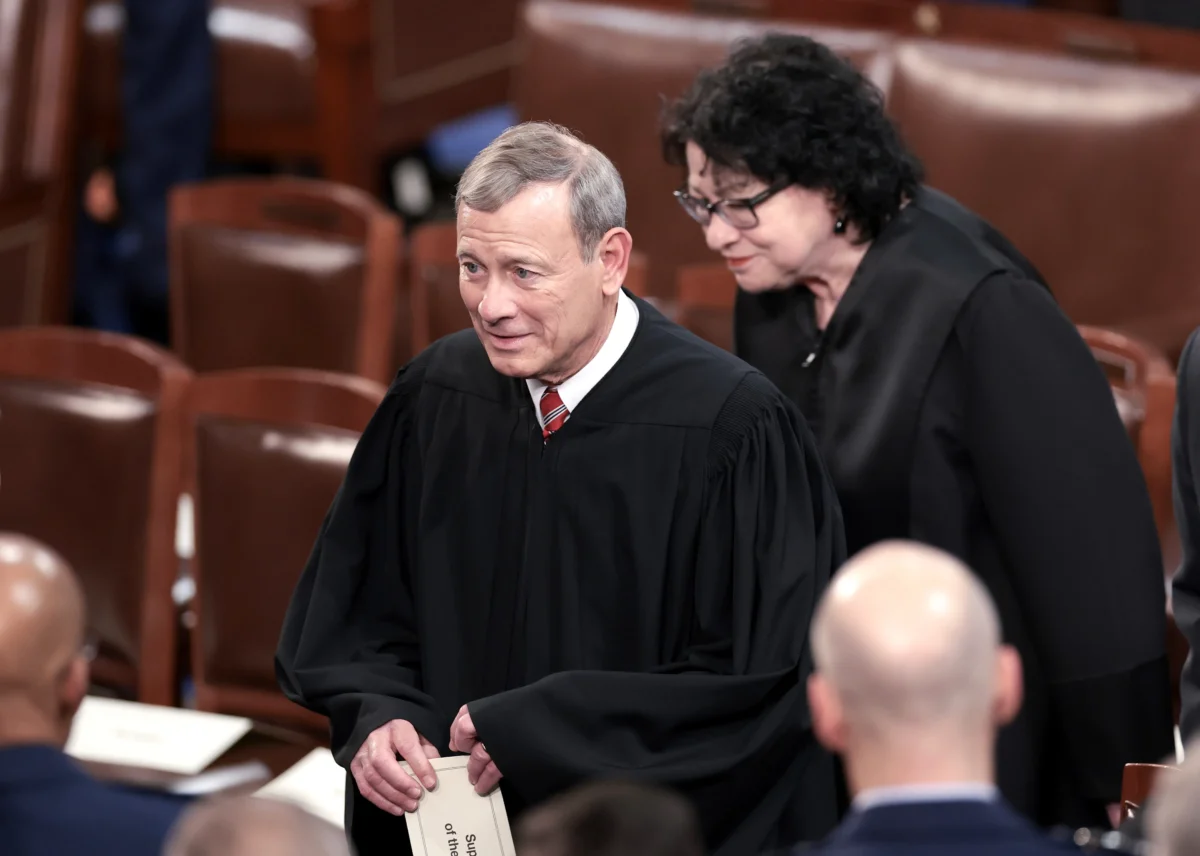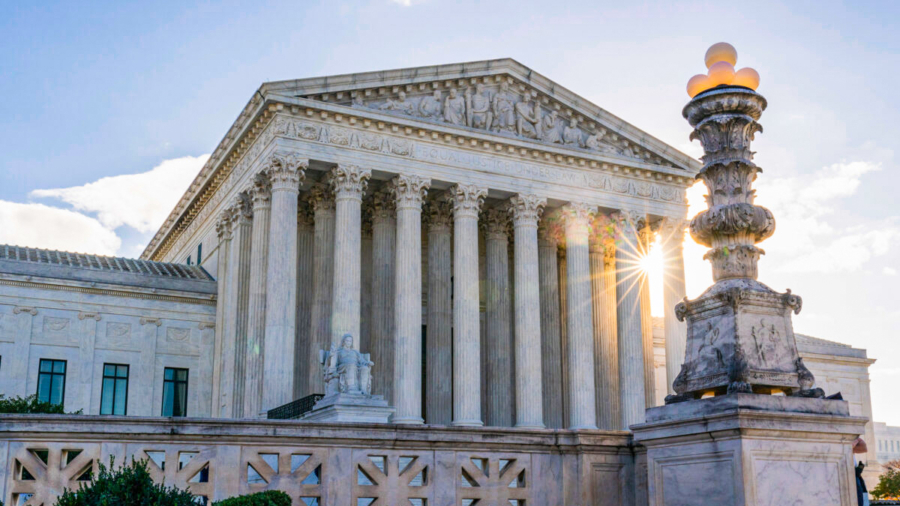The Supreme Court ruled against the Securities and Exchange Commission’s (SEC) use of in-house administrative courts, holding that defendants who face civil penalties must receive a jury trial under the Seventh Amendment of the Constitution.
“A defendant facing a fraud suit has the right to be tried by a jury of his peers before a neutral adjudicator,” reads the majority opinion, authored by Chief Justice John Roberts, He added that investment adviser George Jarkesy, who brought the suit, and his firm “are entitled to a jury trial in an Article III court.”
The case, SEC v. Jarkesy, was one of several challenging the administrative state’s power in the 2023–2024 term. The agency penalized Mr. Jarkesy for violating securities fraud law. He challenged the courts for their lack of juries and for allegedly not receiving proper authorization from Congress.
Chief Justice Roberts was joined in the 6–3 decision by Justices Samuel Alito, Clarence Thomas, Neil Gorsuch, Brett Kavanaugh, and Amy Coney Barrett. Justice Sonia Sotomayor penned a dissent, which was joined by Justices Ketanji Brown Jackson and Elena Kagan.
“Today is a great day for the Constitution, for the legal process, and for the rule of law,” Mr. Jarkesy said in a statement on June 27.
“The ramifications of this case are so much bigger than one person. If this could happen to me, it could happen to any citizen of this country and after a decade of gross misconduct and blatantly unconstitutional political attacks from the SEC and their in-house court, today the United States Supreme Court ruled that the Constitution still matters.”
Sotomayor’s Dissent
The dissent described the majority as engaging in a “power grab” and worried about the implications for separation of powers.
“The majority pulls a rug out from under Congress without even acknowledging that its decision upends over two centuries of settled Government practice,” Justice Sotomayor wrote.
She said the majority took on a “mistaken conclusion that Congress cannot assign a certain public-rights matter for initial adjudication to the Executive because it must come only to the Judiciary.”
The majority, meanwhile, accused the dissent of seeking to concentrate too much power in the hands of the executive branch.
“A defendant facing a fraud suit has the right to be tried by a jury of his peers before a neutral adjudicator,” Chief Justice Roberts’s opinion read. “Rather than recognize that right, the dissent would permit Congress to concentrate the roles of prosecutor, judge, and jury in the hands of the Executive Branch.”
A key disagreement between the dissent and majority was over whether the SEC’s enforcement fell under the “public rights exception” to Article III adjudication.
The dissent referred to the court’s precedent in Atlas Roofing v. Occupational Safety and Health Review Commission (OSHA) in 1977, which held that Congress could assign OSHA adjudication of public rights.
In that case, the court described cases involving public rights as those “in which the Government sues in its sovereign capacity to enforce public rights created by statutes within the power of Congress to enact.”

During oral argument in November 2023, the justices and the federal government didn’t seem to agree on a definition of public rights.
Principal Deputy Solicitor General Brian Fletcher cited Atlas Roofing in arguing that “when the federal government, an agency, is enforcing a federal statute in its exercise of its sovereign powers, that’s a matter involving public rights.”
Both Justices Kagan and Jackson suggested in November that precedent had resolved the case. Justice Sotomayor’s dissent portrayed Atlas Roofing’s application as “obvious.”
“It should be obvious by now how this case should have been resolved under a faithful and straightforward application of Atlas Roofing and a long line of this Court’s precedents,” she wrote.
The majority, meanwhile, criticized Atlas Roofing for offering a “circular” definition for the public rights exception. It also argued that “the public rights exception does not apply automatically whenever Congress assigns a matter to an agency for adjudication.”
Gorsuch’s Concurrence
Justices Gorsuch and Thomas issued a concurrence to “highlight that other constitutional provisions reinforce the correctness of the Court’s course.”
Written by Justice Gorsuch, the opinion heavily criticized the SEC’s in-house tribunals, comparing them to British colonial officials and arguing they stripped defendants of due process.
“Going in … the odds were stacked against Mr. Jarkesy,” Justice Gorsuch wrote.
“The numbers confirm as much: According to one report, during the period under study, the SEC won about 90 [percent] of its contested in-house proceedings compared to 69 [percent] of its cases in court,” he added, referring to reporting from The Wall Street Journal.
Justice Gorsuch added that the “shift from a court to an [administrative law judge] didn’t just deprive Mr. Jarkesy of the right to an independent judge and a jury.”
“He also lost many of the procedural protections our courts supply in cases where a person’s life, liberty, or property is at stake,” he wrote.
The SEC imposed a civil penalty of $300,000 on Mr. Jarkesy after bringing an administrative proceeding against him. The agency ultimately agreed with the administrative law judge’s conclusion that Mr. Jarkesy had violated securities law.
The U.S. Court of Appeals for the Fifth Circuit ruled that the SEC’s use of administrative law courts was unconstitutional, not only because they lacked juries but also because Congress improperly delegated its authority to the agency and the administrative law judges were too insulated from accountability.
The SEC argued that the Fifth Circuit erred and told the Supreme Court on Nov. 29, 2023, that Congress was able to create these types of administrative law courts because of a legal distinction between public and private rights. Both sides said that distinction hasn’t been fully articulated in the law.
Conservatives on the court seemed poised during oral arguments to support Mr. Jarkesy.
“It seems to me if you have an entitlement to a jury if you’re in federal court,” Justice Barrett said, “I don’t understand then how you [don’t] have that right, how it can go to an agency.”
From The Epoch Times

